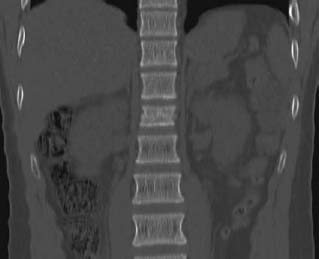CASE 108 Hema N. Choudur, Anthony G. Ryan, and Peter L. Munk A 29-year-old man presented to the emergency department with back pain following a motor vehicle accident. He had been wearing a lap-only seat belt at the time of the accident. No neurologic deficit was elicited. Clinical exam revealed posterior tenderness, hematoma, and interspinous widening but with no kyphosis. Figure 108A Figure 108B Plain radiographs (not shown) suggested a transverse fracture involving the L1 vertebral body, laminae, pedicles, and spinous process with no vertebral body displacement. CT with sagittal and coronal reformats (Figs. 108A,108B sagittal; Figs. 108C, 108D coronal) confirmed a transverse fracture of the L1 vertebral body extending through all the posterior elements. No spinal canal compromise was evident. A postfixation radiograph (Fig. 108E) demonstrates successful fixation of the fracture. The patient made a full recovery. Chance fracture. Similar fractures can occur in ankylosing spondylitis, where displacement is frequently seen. These fractures heal well, but sometimes fibrous union and pseudoarthrosis can occur. Other stigmata of ankylosing spondylitis are usually evident. Figure 108D Figure 108E First described by Chance, a British radiologist, in 1948, these fractures most often result from a seat-belt injury. The hyperflexion-distraction injury that occurs following a sudden deceleration in a motor vehicle accident causes four different types of injury:
Chance Fracture
Clinical Presentation
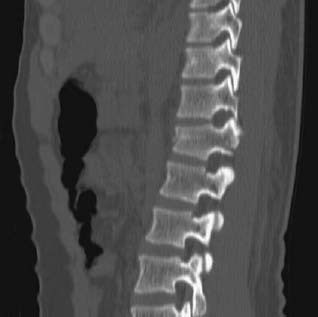
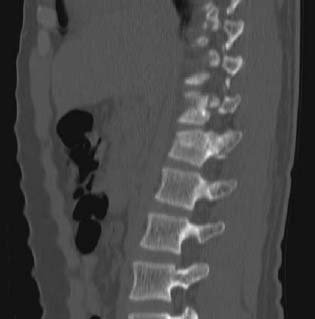
Radiologic Findings
Diagnosis
Differential Diagnosis
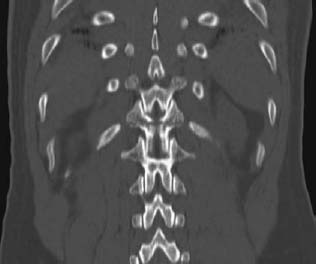
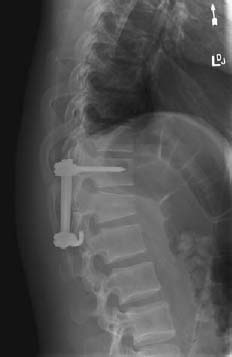
Discussion
Background
Etiology
Stay updated, free articles. Join our Telegram channel

Full access? Get Clinical Tree


